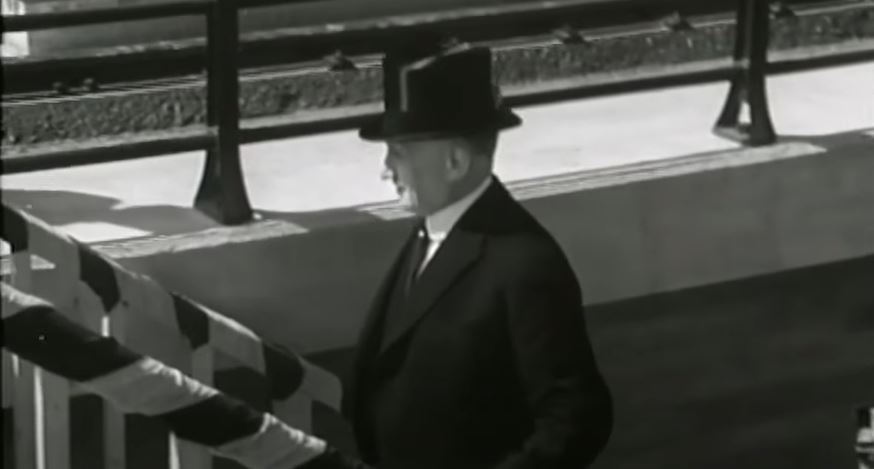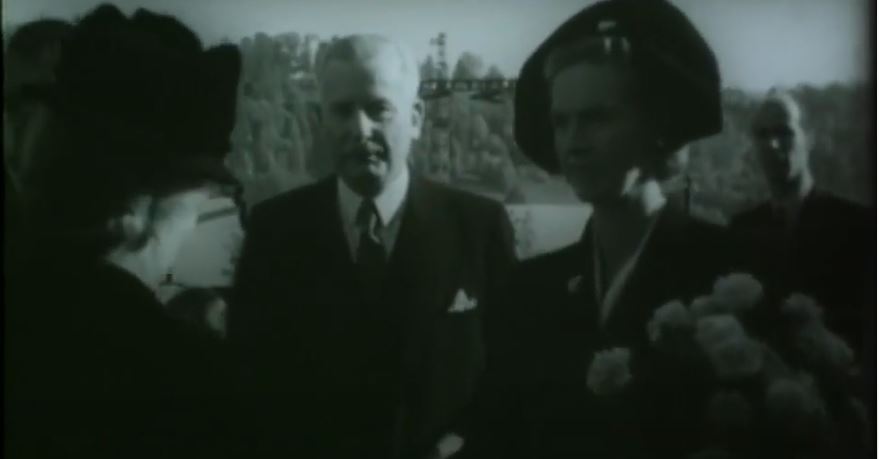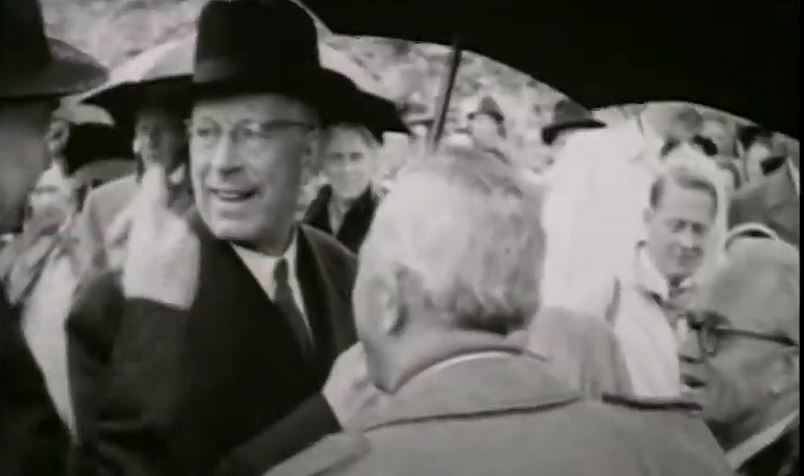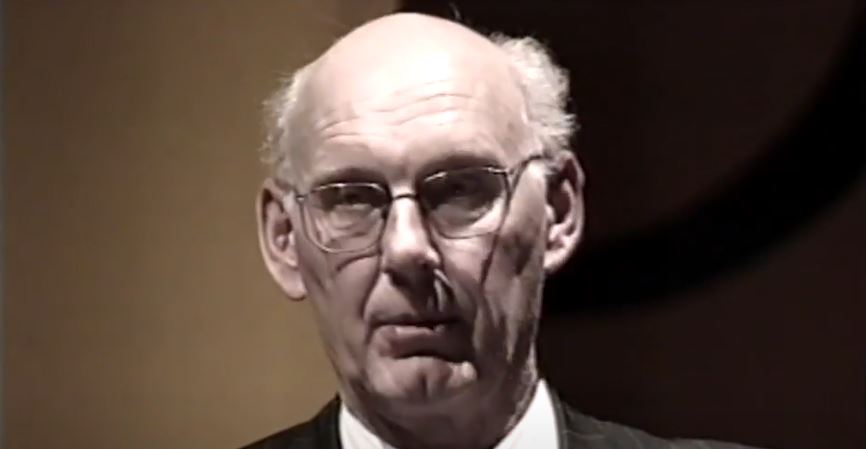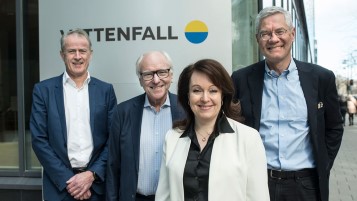Vattenfall’s Directors General and CEOs through the years
F. Vilhelm Hansen 1909–1928
F. Vilhelm Hansen (1862–1929) was Vattenfall’s first Director General. He had an inspiring view of the potential of hydroelectric power, was very eloquent and outgoing, with good contacts in Swedish industry. He came to play a very important part with regard to the role the state was to have in the electrification of Sweden. But neither he nor any of his successors pleaded for a state monopoly in power supply.
Hansen’s task was to develop the state’s hydroelectric resources in Trollhättan, at that time through the Trollhätte canal and waterworks. In 1906, the state started building the large Olidan power station.
In April 1908, the government suggested that the “The Royal Trollhätte Canal and Waterworks” be replaced by a waterfall board. The decision was made by the Swedish Parliament in January 1909, followed by the formation of Kungliga Vattenfallsstyrelsen (the Royal Waterfall Board), with Hansen as its first director. : Now planning began for power stations in Porjus and Älvkarleby, as well as for future exploitation of the other rivers in central Norrland. Vattenfall’s true pioneering period coincided with the 20 years that Hansen was in charge.
F. Vilhelm Hansen graduated from Stockholm’s Royal Institute of Technology as a road and waterway engineer the year he turned 20. Immediately after graduation, he began working as an assistant engineer at the City of Stockholm’s waterworks department, in 1882. He was almost immediately made responsible for the city’s water supply. Thanks to his expertise, many other Swedish cities also turned to him for help in constructing their waterworks.
When Hansen was appointed head of Stockholm’s waterworks in 1897, he was given the opportunity to demonstrate his strong negotiating skills. Hansen, like many others at the time, had several irons in the fire. From 1898, he was also president of the Trollhätte canal company, a private company that owned and operated the canal traffic from lake Vänern to Gothenburg. This company was purchased by the state in 1904 in order to exploit the water rights in Trollhättan. The company then became Kungl. Trollhätte kanal- och vattenverk (the Royal Trollhätte Canal and Waterworks), with Hansen as its head.
Gösta Malm 1928–1938
When Hansen came to be replaced, there were two serious rivals. Vattenfall’s deputy Director General Waldemar Borgquist was one, and probably the favourite at Vattenfall. But it was county governor Gösta Malm (1873–1965), who had also previously been at Vattenfall, who the Swedish government appointed Director General. Borgquist was hugely disappointed. It is said that Borgquist, when he met with the Communications Minister, stated: “I don’t have the strength to train up yet another Director General.” By that he meant that it would be better to have a manager who understood electrical engineering rather than a road and waterway engineer who needed to be taught the subject.
Malm was head of Vattenfall during a difficult time due to a recession and weak public finances. The private power industry also viewed the state’s continuing role in the power sector with growing scepticism, and strong criticism was directed at Vattenfall’s tariffs, particularly by distribution undertakings in rural areas. However, being a skilled negotiator and minister, Malm managed to maintain the “power balance”, thanks in part to a new tariff system.
The biggest initiative under Malm was to bind together the Swedish power grid in cooperation with other power companies, so that electricity from the north could be distributed to central and southern Sweden. During Malm’s time, the regulation of lake Vänern was completed and construction on several new power stations began, including Sillre, Vargön, Malfors, Stadsforsen and Västerås.
When Malm left Vattenfall on the grounds of age, many years of directorships within the banking and insurance industry followed, and he became a keen supporter of technical education and research.
Gösta Malm, like Vattenfall’s first Director General, graduated from the Royal Institute of Technology. He was recruited by Hansen during the latter’s time at the Stockholm waterworks, and continued to work for Hansen in Trollhättan. Malm had a leading responsibility in the construction of the pioneering works in Trollhättan, Porjus and Älvkarleby. However, he left Vattenfall in 1914 to become Managing Director of Skånska Cement. In 1917, he left the industrial sector to become county governor of Norrbotten, where he worked intensively for the electrification of the county. During the years from 1920 to 1928, Malm held several ministerial posts in the Swedish government.
Waldemar Borgquist 1938–1947
Waldemar Borgquist (1882–1970) was already a legend during his heyday. He was knowledgeable, creative and powerful and had a dominant influence on the business, even before he became Director General. Borgquist has been described as Vattenfall’s last patriarch. He was authoritarian and awe-inspiring, but he also cared for the employees like a good patriarch. This was paired with his legendary excellent memory for both people and events. This was much appreciated at a time when people spoke of the “spirit of Vattenfall” and “the Vattenfall family”.
Borgquist’s time as Director General of Vattenfall coincided with the Second World War. In a speech at the Christmas party of the Swedish electrical engineers’ association in 1966, Borgquist explained that he and Vattenfall had understood in the autumn of 1938 that a global catastrophe was in the offing. This was after Hitler’s “psychopathic speech” threatening Czechoslovakia. Vattenfall immediately began preparations for a new war.
In this situation, the power companies began a partnership to safeguard the power supply. Centrala Driftledningen (CDL – Central Operational Management) was formed. They also developed the so-called Swedish system, i.e. the interaction between state, private and municipal power companies. Borgquist also made a great contribution in the power transmission field by initiating the construction of a huge power grid involving Sweden’s at that time highest voltage.
Borgquist was the first Director General to be increasingly confronted by protests against hydroelectric power. Among other things, he worked closely with the Director General of the National Heritage Board Sigurd Curman on the preservation of the environment around the construction sites. The most important result was that the petroglyphs in Nämforsen were not dammed over, but were preserved for posterity.
Waldemar Borgquist also graduated from the Royal Institute of Technology, in electrical engineering. He was at Vattenfall right from the start, and arrived at the Trollhättan site in 1908, where he was production engineer. In 1911 he moved to Stockholm to become the manager of Vattenfall’s electro-technical department. He realised that the state did not own very many waterfalls north of the river Dal, and felt that Vattenfall should expand its programme and become a “national bank” of power supply. In order to cope with the task, the state had to acquire sufficient hydroelectric power in central Norrland. A task that Borgquist took on. It was important to act swiftly and silently, with almost every purchase of water rights associated with dramatic episodes. But nor was Borgquist interested in creating a state monopoly.
: Between 1933 and 1953, Waldemar Borgquist was chairman of the board for the telecom company LM Ericsson.
Åke Rusck 1948–1958
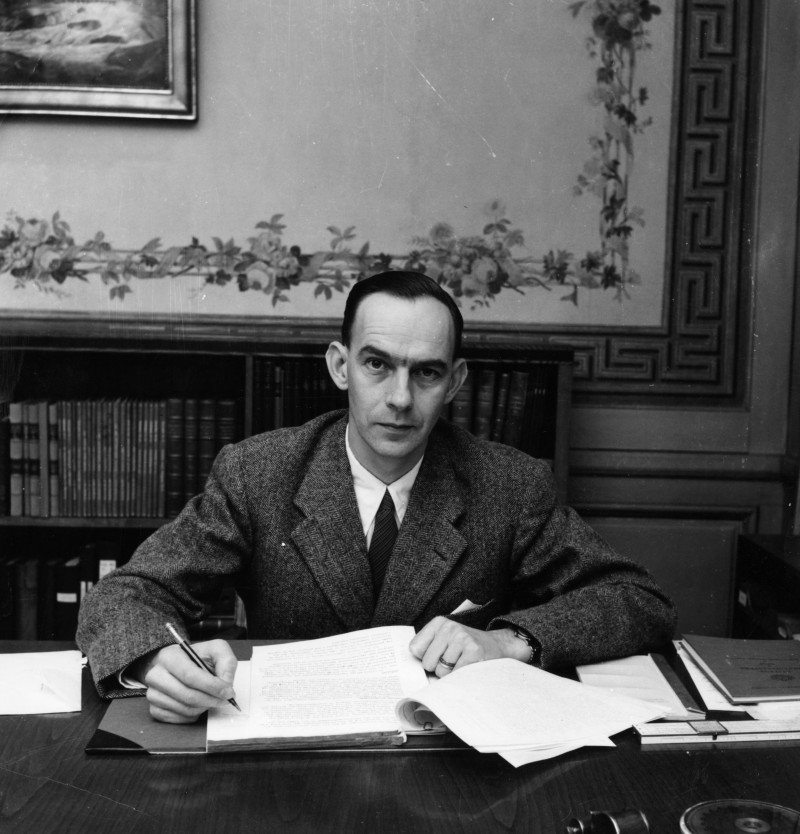
Åke Rusck, Director general of Vattenfall 1948–1958. Year: - | Place: - | Creator: Okänd | ID: VF000080
Åke Rusck (1912–1978) became Director General of Vattenfall at only 35 years of age – at that time the youngest Director General ever appointed in Sweden. He was a very modern boss, not a patriarch like his predecessor. The new “democratic” spirit of the age suited him, although some individuals thought it was just a little too democratic when, in the 1950s – ahead of its time – he introduced the use of first names at Vattenfall. This applied to everyone, regardless of position or pay grade. However, he failed with this initiative. It was only during Norrby’s time that the reform became a success.
There were a lot of records set during Rusck’s time as Director General. At that time, Sweden experienced the so-called peak years, when hydroelectric power set ever new records. The construction sites meant that the number of employees increased from 7,000 to 14,000. The staff magazine ‘Vi i Vattenfall’, which was started at the initiative of Rusck, came to be known as the ‘Records Magazine‘ due to all the articles about record constructions completed during his time.
Nuclear power also started to be discussed as an energy option during Rusck’s time, and in 1955 he established Atomkraftbyrån (the Nuclear Power Department). When Rusck left Vattenfall in 1958, he became CEO of the airline SAS.
Åke Rusck, with a degree in both weak-current and strong-current technology from the Royal Institute of Technology, actually had his sights on a future at Televerket, the telecommunications authority. Instead, immediately after his graduation he ended up at Vattenfall where he had a meteoric career. He quickly became known for his well-made technical-economic investigations that formed the basis for Vattenfall’s expansion plans. Five years after Rusck started at Vattenfall (1934), he became, at 27 years old, the head of the Operations Office. For a few years he was also head of Älvkarleby regional administration, becoming deputy Director General of Vattenfall in 1946.
Erik Grafström 1958–1970
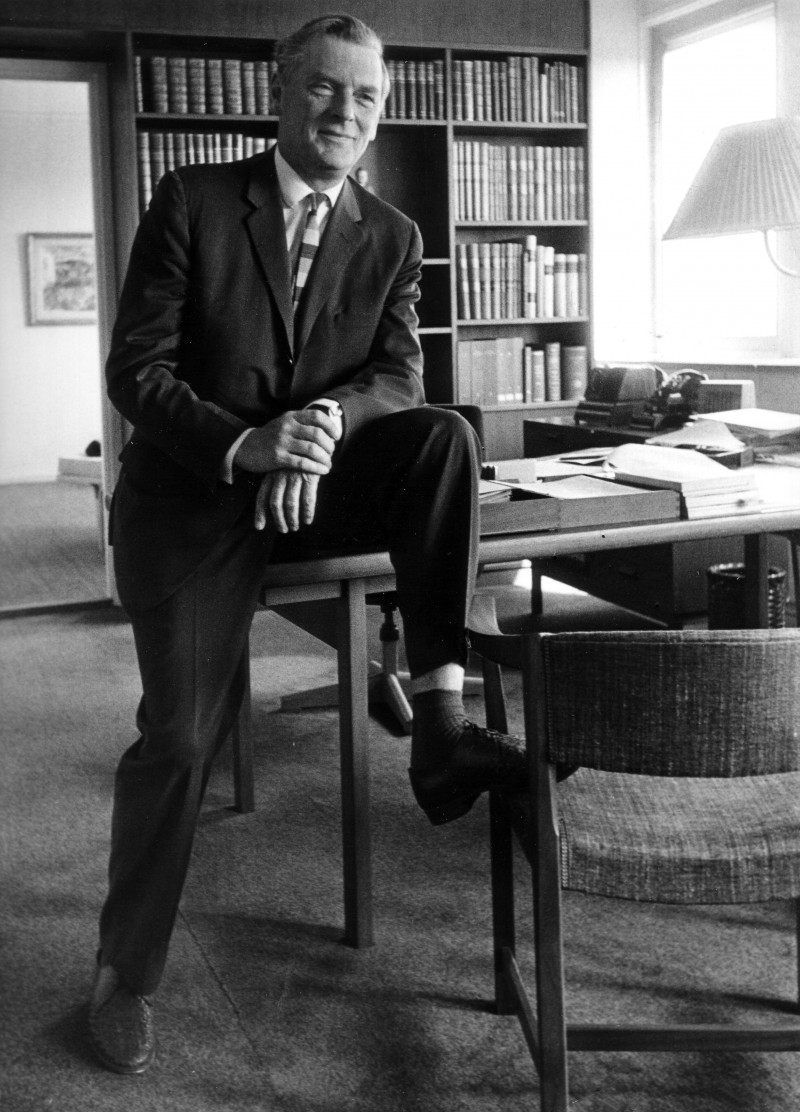
Erik Grafström. Director general of Vattenfall 1958–1970. Year: - | Place: - | Creator: Vattenfall | ID: VF000145
Erik Grafström (1915–1991) was the first (and so far only) Vattenfall manager not to be an engineer. He was also the first externally recruited Director General. He came from the Social Democratic government’s ministry of communications, where he was a Secretary of State. He was regarded by industry and the power sector as a ‘socialist’ and Vattenfall’s partner Asea worried that a non-engineer had been given the post.
Grafström had gained a reputation as a skilled investigator, which suited the phase Vattenfall was now in. Great technological leaps had been taken, and the rate of expansion in hydroelectric power had dropped dramatically. Now it was time for future investments in nuclear power to be based on sound economic calculations. Former executives had sometimes been able to worry less about the economy, as the priority was rapid expansion to avoid electricity rationing.
The reduction in the rate of expansion in hydroelectric power meant reorganisations and structural changes, something that Grafström had experience of investigating. In 1962, he implemented a huge reorganisation and Vattenfall moved to a new office building in Råcksta. He was also forced to rationalise the construction activities in the late 1960s, when the number of employees fell by almost half – from 14,000 to 8,000.
Energy and atomic power increasingly became politically tricky questions during Grafström’s time. Vattenfall also invested in nuclear power, and construction on the Ringhals nuclear power plant was started. This also fitted his background. In 1955 he had been head of the atomic energy commisson. However, later in life, after he left Vattenfall, Grafström began to have doubts about nuclear power.
Erik Grafström, as mentioned, was not an engineer but a political sciences graduate specialising in economics and social sciences. During his studies at Stockholm University, he had been influenced by radicals such as Gunnar Myrdal, Karin Kock and Herbert Tingsten. Grafström later became a frequent investigator and negotiator. Together with Per Åsbrink (later head of the Swedish national bank) and Arne S Lundberg (future president of mining company LKAB), he transformed LKAB into a state-owned company.
Jonas Norrby 1970–1985
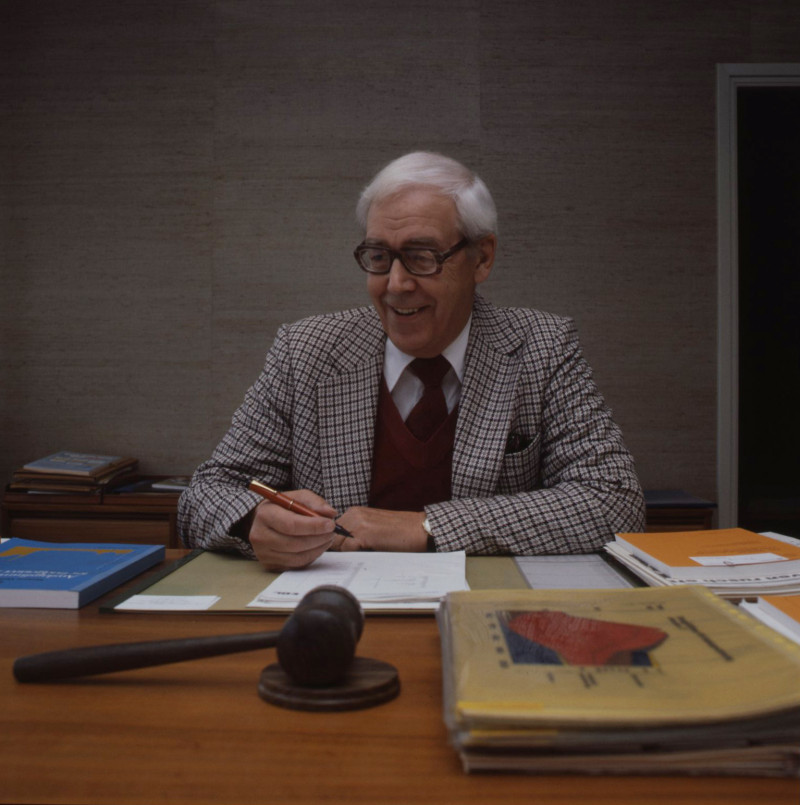
Jonas Norrby, Director general of Vattenfall 1970–1985. Year: 1960 | Place: - | Creator: Vattenfall | ID: VF000041
When Vattenfall came to appoint Grafström’s successor, it reverted to previous practice and appointed an engineering graduate from within Vattenfall: Grafström’s closest associate, Jonas Norrby (1920–2006).
His tenure as Director General was one of the more turbulent periods in Swedish energy history. Protests against river exploitation and nuclear power. The oil crisis, nuclear referendum, strikes and seven different energy ministers. Sweden had a right-of-centre government for the first time in over 40 years.
Norrby was in hot water the moment he took up the post. Among the first issues he had to deal with was electricity rationing and a serious power plant breakdown in Stenungsund
Electricity consumption was expected to continue to increase rapidly, at more than 7 per cent a year. The increase was mainly to be met by nuclear power. There was an extensive expansion programme involving many technical challenges. The number of employees increased during Norrby’s time to 12,000. But fresh construction activities would again come to be cut.
Jonas Norrby’s personal qualities were key to his management style at Vattenfall – a company that acted in an environment of many stakeholders. He was said to have two strong points. One was forethought, the willingness and ability to empathise, to understand the opposing party’s views and realise the consequences of different decisions. The other was an enquiring mind, the ability to analyse different options and evaluate the decisions made.
Jonas Norrby started at Vattenfall in 1944, immediately after graduating from the Royal Institute of Technology. He initially worked on timber floating problems associated with hydroelectric development and continued with hydrological investigations in connection with lake regulation – an area he was then made manager of. In 1962 he was appointed Director of Planning.
Carl-Erik Nyquist 1985–2000
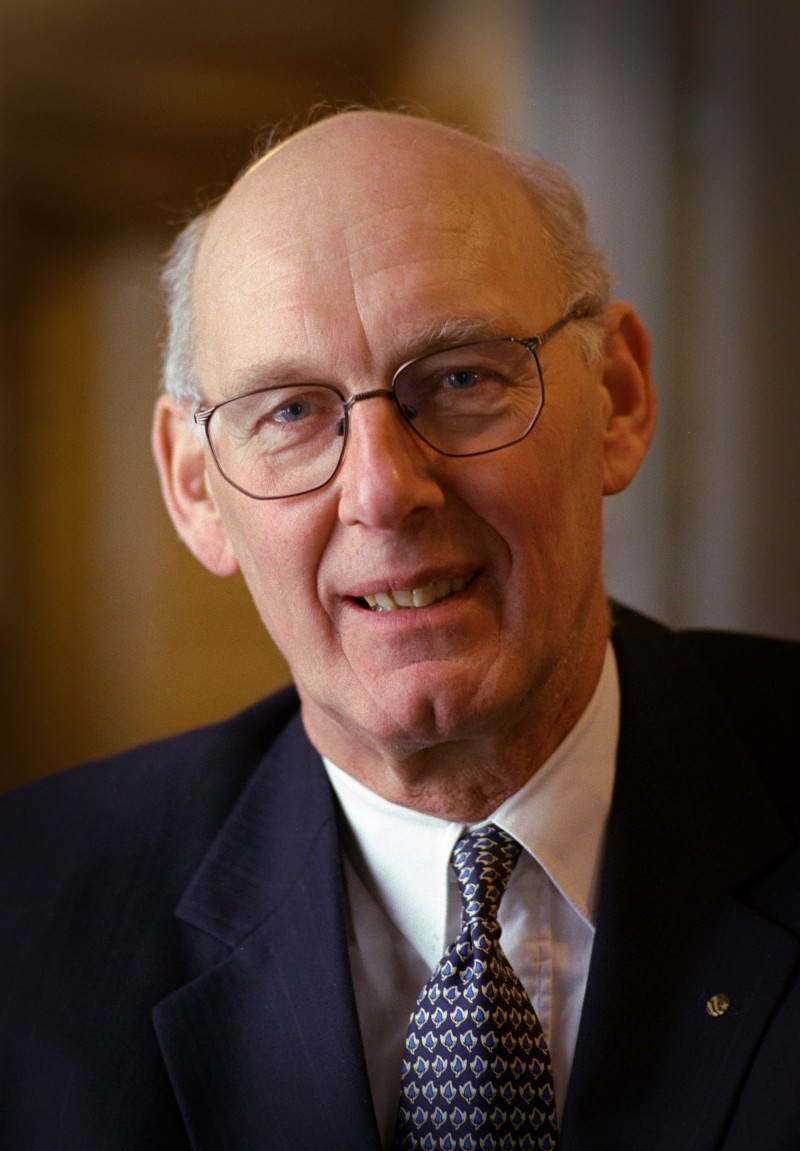
Carl-Erik Nyquist, Director general of Vattenfall 1985–2000. Year: 1998 | Place: - | Creator: Hans Blomberg | ID: VF000534
Carl-Erik Nyquist (1937–2023), who was externally recruited, became Vattenfall’s last Director General before the organisation was incorporated, when he became its CEO. He pushed through major changes in the organisation to guide Vattenfall towards becoming an energy service company with a business intelligence and market orientation. Deregulation of the electricity market in 1996 also called for major changes.
In many ways, this was a revolutionary time for Vattenfall. A fatal catastrophe occurred at the Chernobyl nuclear power plant in 1986, the Berlin Wall fell in 1989, Vattenfall was incorporated in 1992, Sweden joined the EU in 1995 and the electricity market was deregulated in 1996. The expansion phase of hydroelectric power, nuclear power and the power grid was also largely complete.
Vattenfall was facing a paradigm shift. Nyquist created an organisation that could continue to retain a leading position when the traditional relationship between producer and consumer was broken once deregulation and competition were in place. The situation also demanded that Vattenfall began building its brand for end consumers. This resulted in the award-winning ‘two holes in the wall’ campaign.
During Nyquist’s time, Vattenfall developed from a Swedish public enterprise into an international company. He also worked intensively to improve gender equality in the company. As a result, he was named “Swedish equality champion” of 1991 by business magazine Veckans Affärer.
Under Nyquist, international expansion also started in earnest. After a number of failed attempts in different parts of the world, a breakthrough came in Germany with the acquisition of Hamburg’s power company HEW in 1999-2000.
Something else close to Nyquist’s heart was sport, especially orienteering and winter sport. In 1994, Vattenfall began its sponsorship of the Swedish national skiing teams. A successful and long-term venture that has lasted for more than 20 years.
Carl-Erik Nyquist was another in the line of Director Generals with a degree from the Royal Institute of Technology. After graduating in 1960 he became a trainee engineer at Asea and subsequently head of Härnösands Industriverk in 1971. He was also a power plant director at Skellefteå Kraft from 1977 to 1984 and then vice CEO at Stockholm Energi until 1985.
Lars G Josefsson 2000–2010
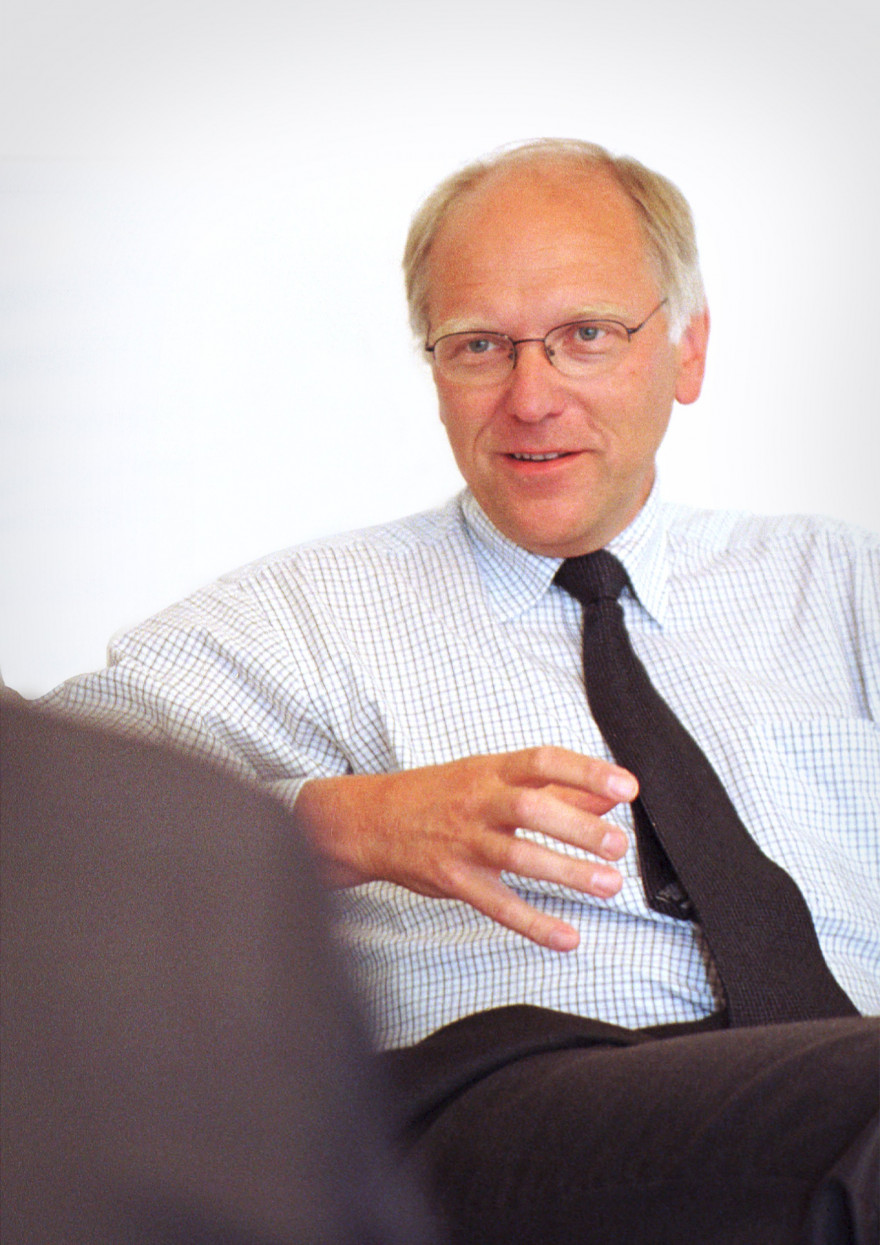
Lars G Josefsson, CEO of Vattenfall AB 2000–2010. Year: - | Place: - | Creator: Okänd | ID: VF200086
Lars G Josefsson (1950–) was an external recruit when he took over as CEO of Vattenfall. During his tenure, the company expanded abroad significantly, mainly in Germany, and at its peak had operations in seven different countries. The company grew from a turnover of SEK 32 billion to over SEK 205 billion. Josefsson turned Vattenfall from a Nordic company into one of the largest energy companies in Europe.
During his time as CEO, Josefsson made a name for himself internationally on climate change issues. He was appointed a climate adviser to German Chancellor Angela Merkel and in UN contexts. At the same time, Vattenfall was criticised for its coal plants.
In 2009, Josefsson made the largest acquisition ever in Swedish industrial history: the Dutch energy company Nuon for around SEK 90 billion. A deal that led to much criticism of Vattenfall afterwards. Josefsson was forced to resign prematurely after a storm of criticism of Vattenfall, both politically and in the media, particularly because of proposals to sell the electricity grid, malfunctioning nuclear power plants, German coal power stations, big bonuses and the acquisition of Nuon.
Lars G Josefsson trained as an engineer in engineering physics at Chalmers University of Technology in Gothenburg. Prior to joining Vattenfall, he held various management positions in companies such as Ericsson and Celsius AB.
Øystein Løseth 2010–2014
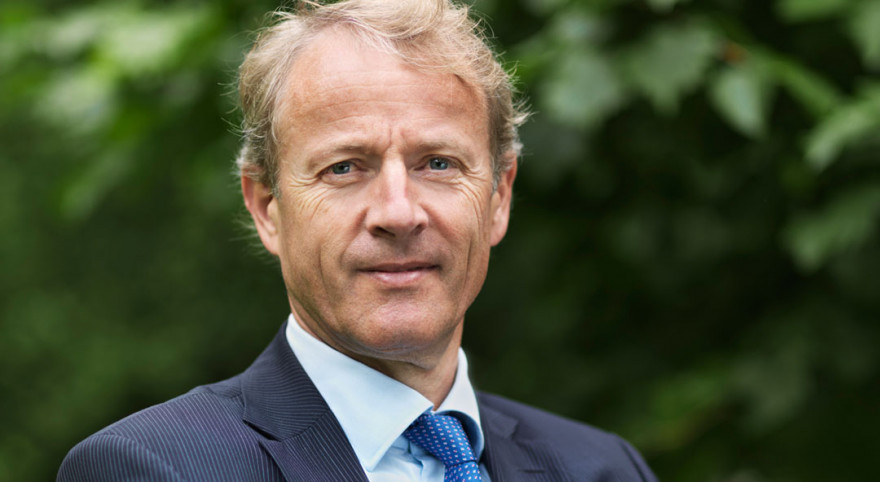
Øystein Løseth, CEO of Vattenfall AB 2010–2014. Year: - | Place: - | Creator: Okänd | ID: VF200099
Øystein Løseth (1958–) became CEO of Vattenfall after its acquisition by the Dutch company Nuon, where he was CEO. During Løseth’s time, Vattenfall experienced a period of consolidation during which operations were concentrated on the four main markets (Nordic, Germany, the Netherlands and windpower in the UK). A number of divestitures were completed, including the operations in Poland and Belgium and parts of the Finnish operations. The sale of the Polish and Belgian assets was profitable for Vattenfall.
Falling electricity prices during this period were a major problem for Vattenfall and other power generators. A radical savings programme was implemented, as well as a new organisation.Worries in the wake of the Nuon deal escalated. The value of the asset plummeted and Vattenfall was forced to make large write-downs. In 2013, Vattenfall was unable to report a profit for the first time ever. The deal also brought a lot of bad publicity for Vattenfall, which affected the company's image.
Øystein Løseth was also an engineer, having graduated from the Norwegian University of Science and Technology (NTNU) in Trondheim. He joined Statoil in 1984 and subsequently worked for both Statkraft and Naturkraft, before joining Nuon in 2003. In 2008 he was appointed CEO of the entire company.
Magnus Hall 2014–2020
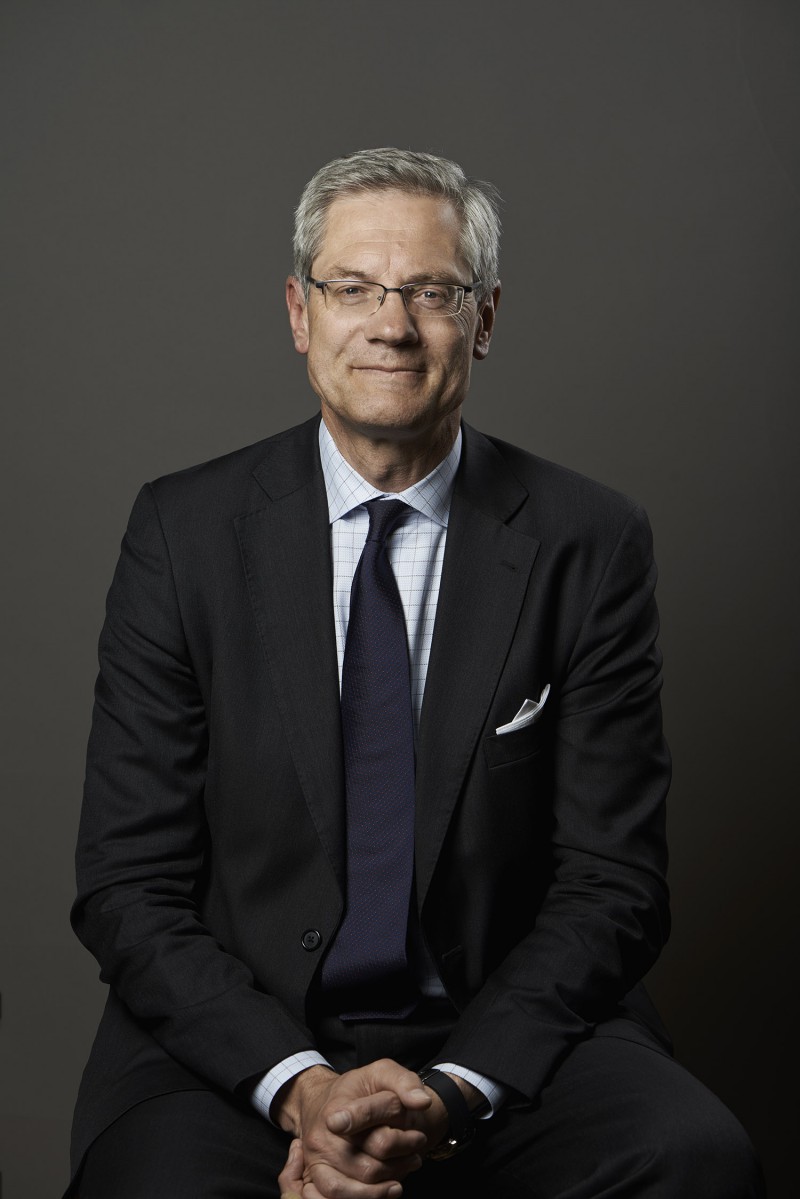
Magnus Hall, President of Vattenfall AB and Chief Executive Officer of the Vattenfall Group from 2014. Year: 2014 | Place: - | Creator: Elisabeth Frang | ID: VF200098
Magnus Hall (1959–) was recruited to Vattenfall from the forestry company Holmen Group, where he worked for 29 years including 10 years as president and CEO. Hall is also an engineering graduate, although he is the first head of Vattenfall to have a degree from Linköping Institute of Technology – in industrial economics.
During Magnus Hall’s tenure, investments are focused on wind power, not the least offshore wind power. The lignite business in Germany is divested to Czech companies. He also initiates extensive work that results in a clarification of the company's strategy and focus, where the goal is to make a fossil-free living possible within one generation. Vattenfall's logo is modernized and the font is named Hall.
Anna Borg 2020–

Anna Borg. Year: 2020 | Place: - | Creator: Peter Knutsson | ID: VF300045
Anna Borg (1971–) was employed at Vattenfall in 1999 and held a number of leading positions during her first 15 years with the company, including Vice President Marketing and Sales for Vattenfall Nordic. For two years she was then Senior Vice President at payment solutions company Nordic Klarna, but returned to Vattenfall in 2017, first as Senior Vice President for Business Area Markets. Later that year she was appointed the Group's CFO. She took over as President and CEO on November 1, 2020. Anna Borg has degree of Master in Economics and Political Science from Uppsala University. Her mission from the Board is to follow the previously paved path towards the company goal of making fossil-free within a generation possible, but with increased focus and speed.
Related documents
Waldemar Borgquist remembers his 40 years at Vattenfall (in Swedish)
Erik Grafström's view on the environmental issues and the expansion of hydro power, at the end of the 1980s (in Swedish)
Erik Grafström's view on him being the first political Director General of Vattenfall (in Swedish)
Erik Grafström's view on the development of nuclear power in Sweden and within Vattenfall, as of December 3rd 1986 (in Swedish)
Carl Erik Nyquist about his first 10 years at Vattenfall (in Swedish)
Carl-Erik Nyquist about his last five years at Vattenfall (in Swedish)
Related videos
Video player requires marketing cookies.
To view this content please click here to allow marketing cookies.
GD Gösta Malm at the inauguration of Vargön’s hydro power station in 1934 (in Swedish)
Video player requires marketing cookies.
To view this content please click here to allow marketing cookies.
GD Waldemar Borgquist at the inauguration of Nämforsen’s hydro power station in 1946
Video player requires marketing cookies.
To view this content please click here to allow marketing cookies.
GD Åke Rusck at the inauguration of Harsprånget’s hydro power station in 1952 - Vattenfall
Video player requires marketing cookies.
To view this content please click here to allow marketing cookies.
GD Erik Grafström’s views on hydro power in Vindelälven in 1972 - Vattenfall
Video player requires marketing cookies.
To view this content please click here to allow marketing cookies.
GD Jonas Norrby summarizes his 15 years as head of Vattenfall
Video player requires marketing cookies.
To view this content please click here to allow marketing cookies.
Carl-Erik Nyquist's views in 1996 on the future power system - Vattenfall (in Swedish)
Video player requires marketing cookies.
To view this content please click here to allow marketing cookies.

